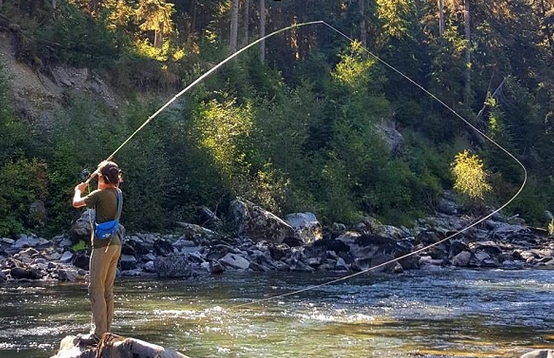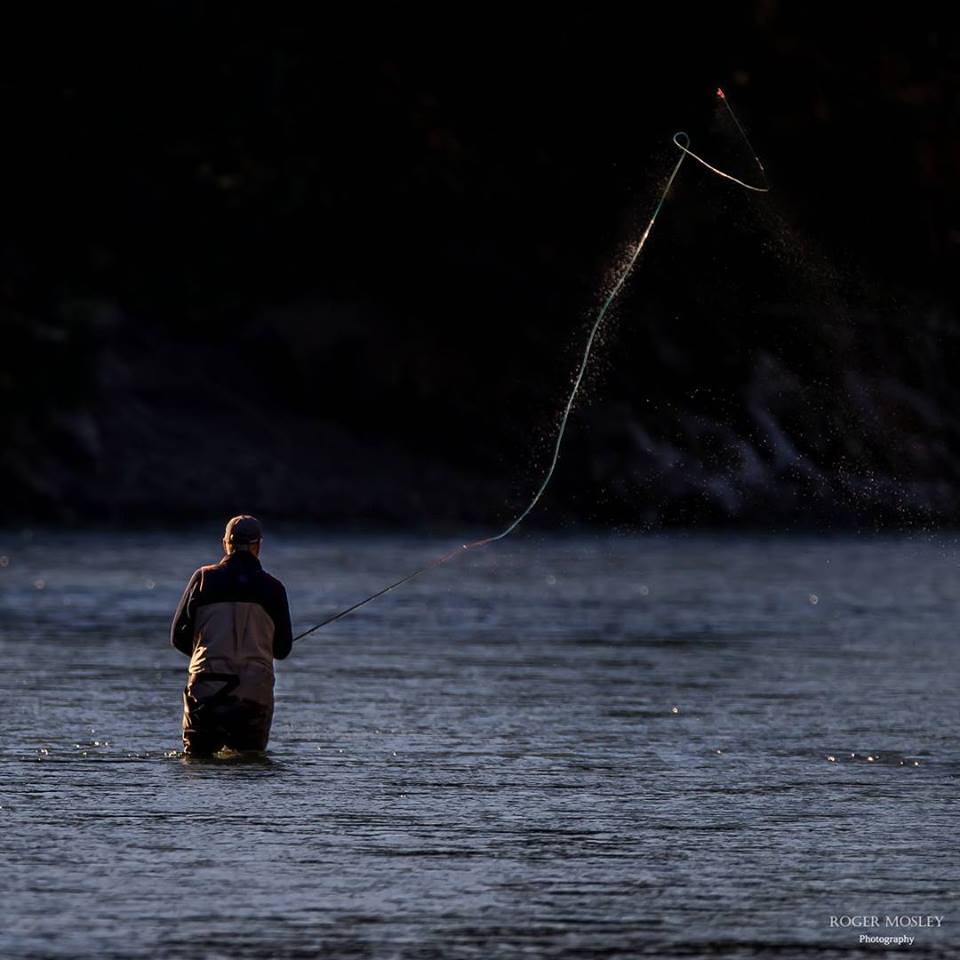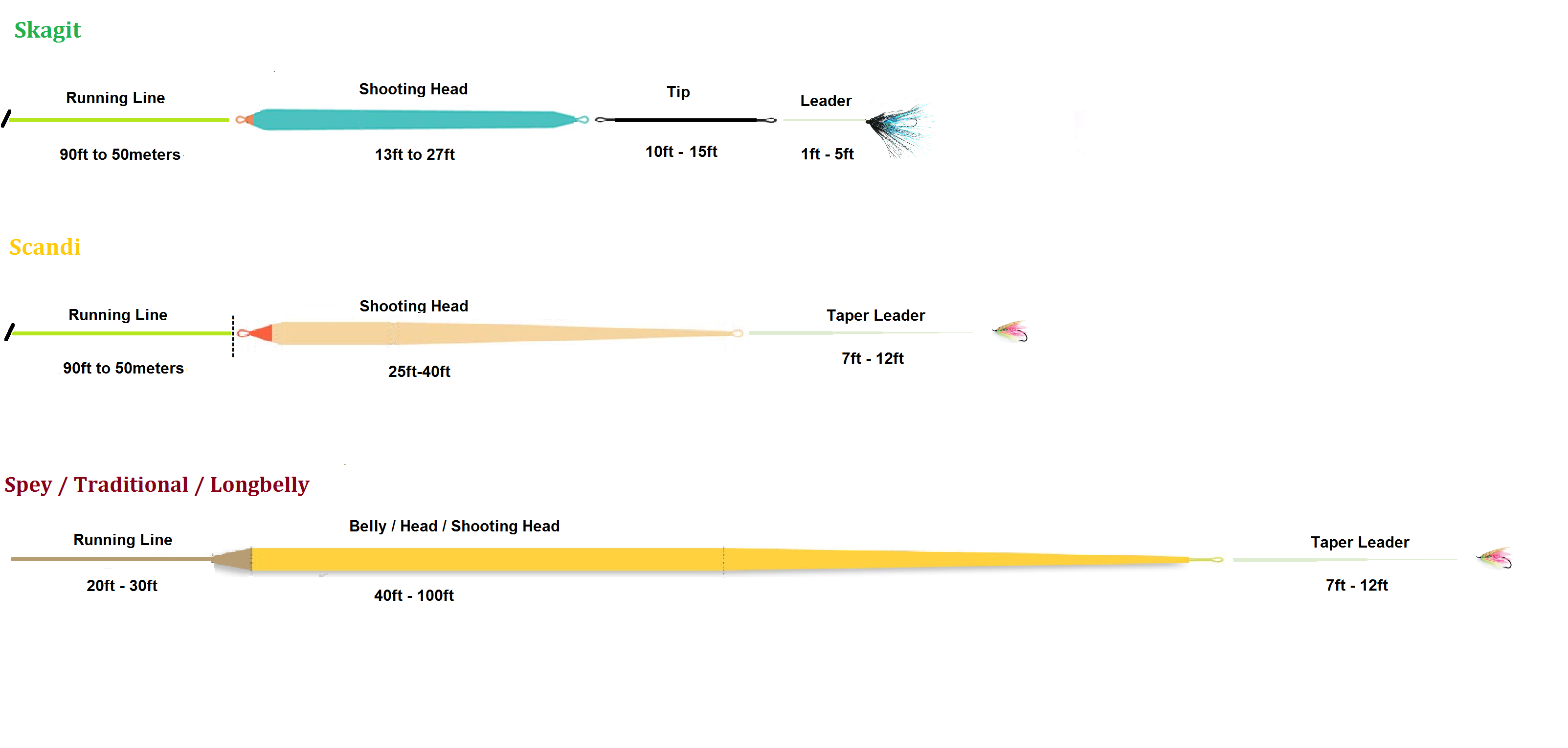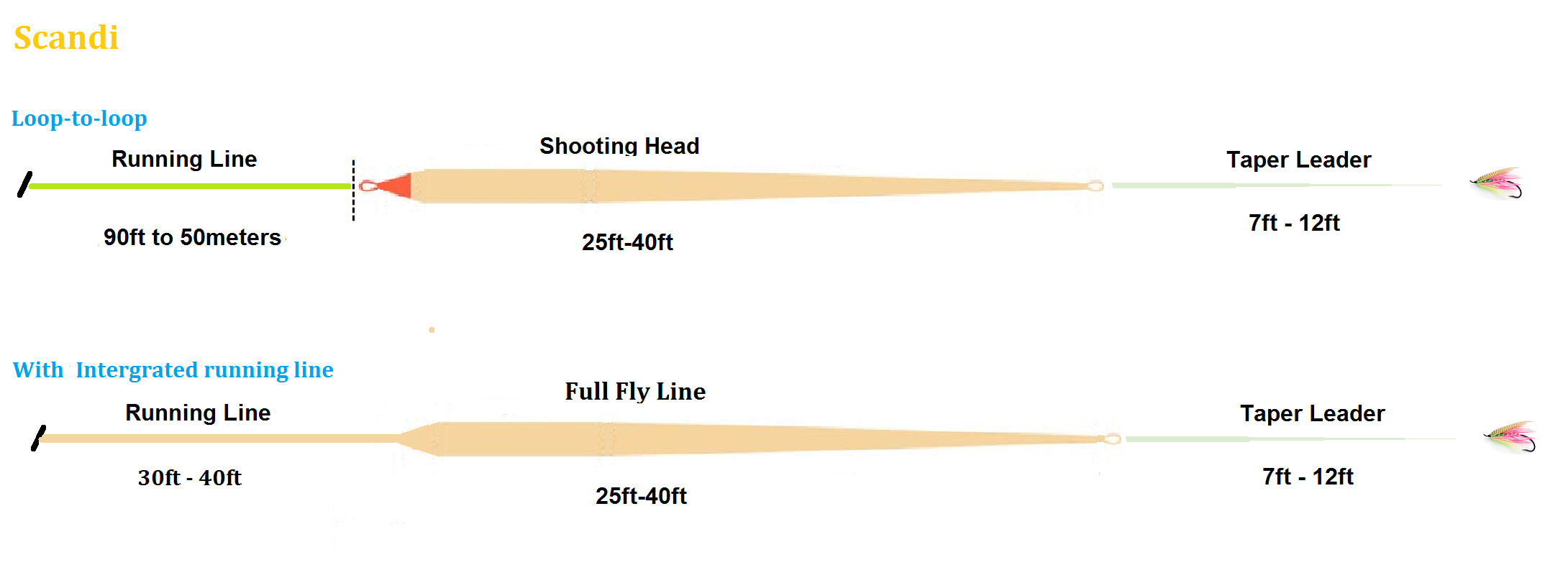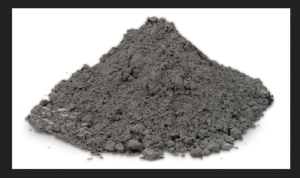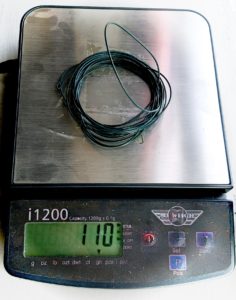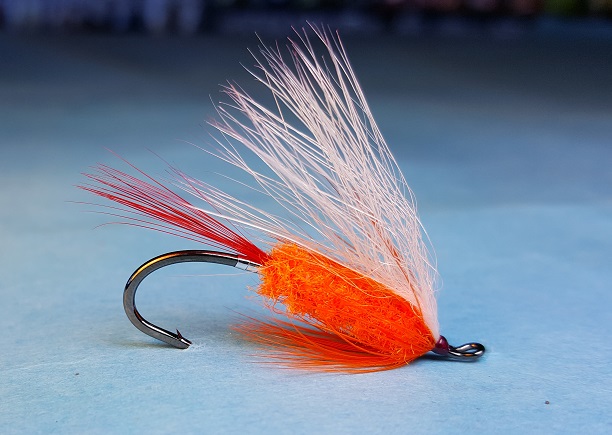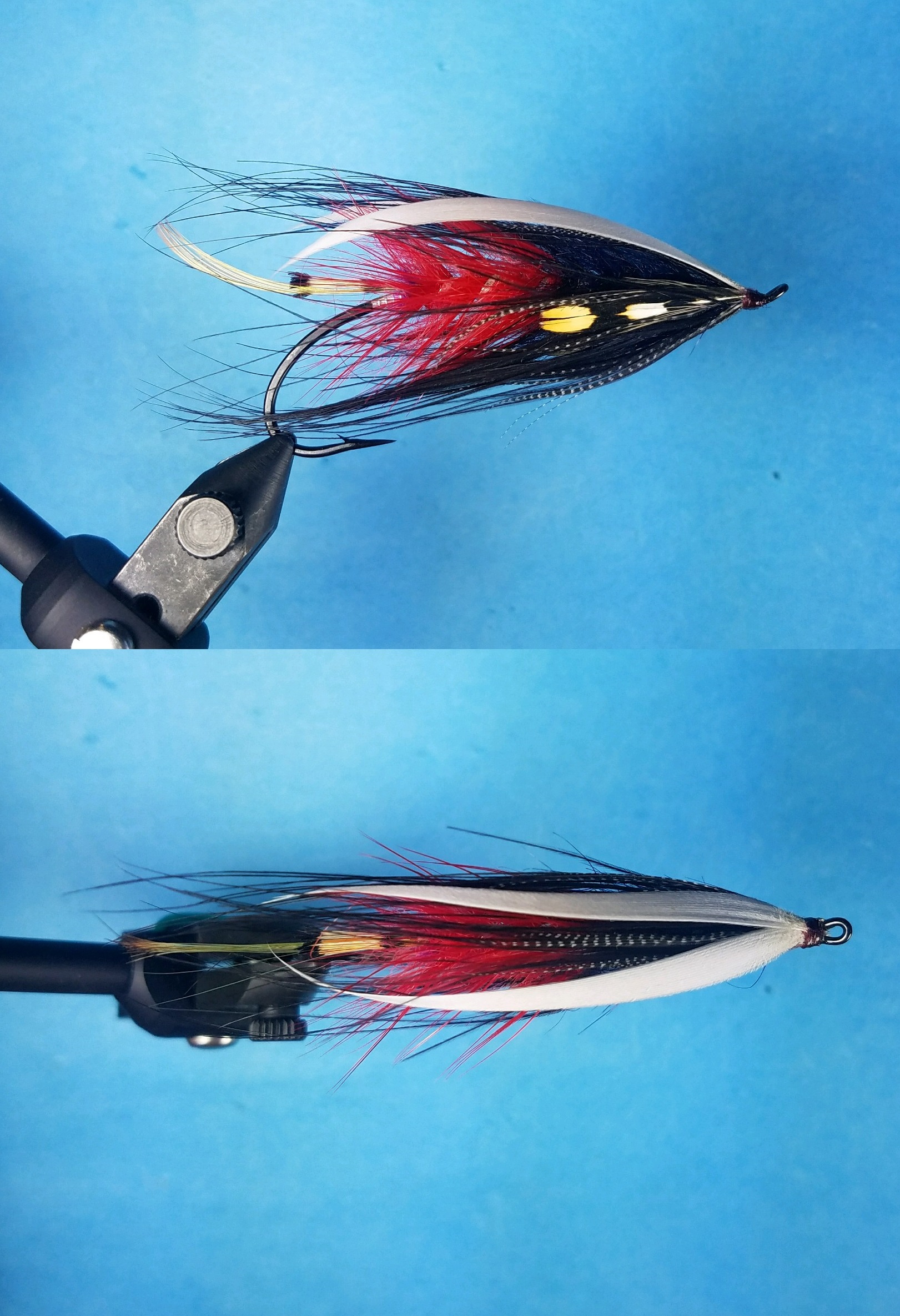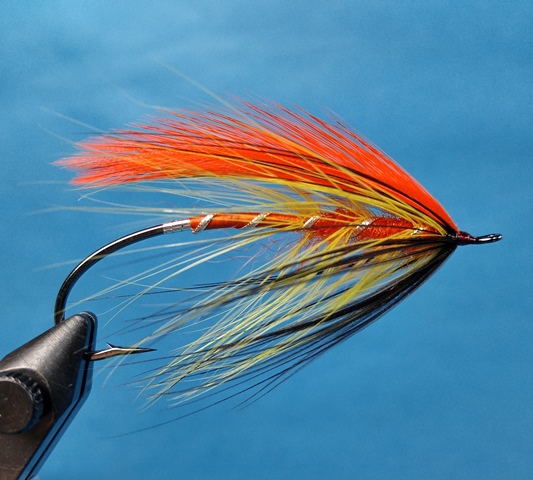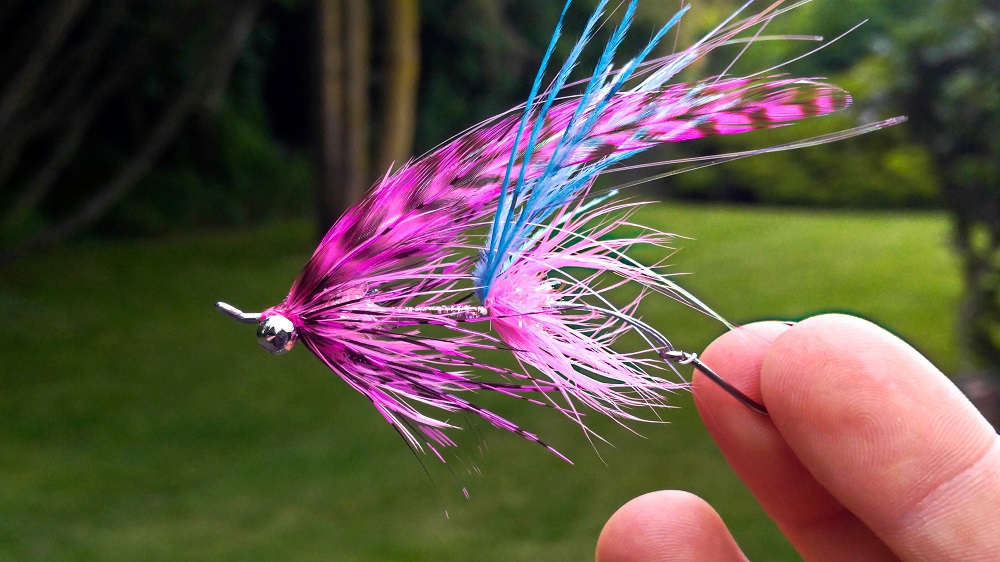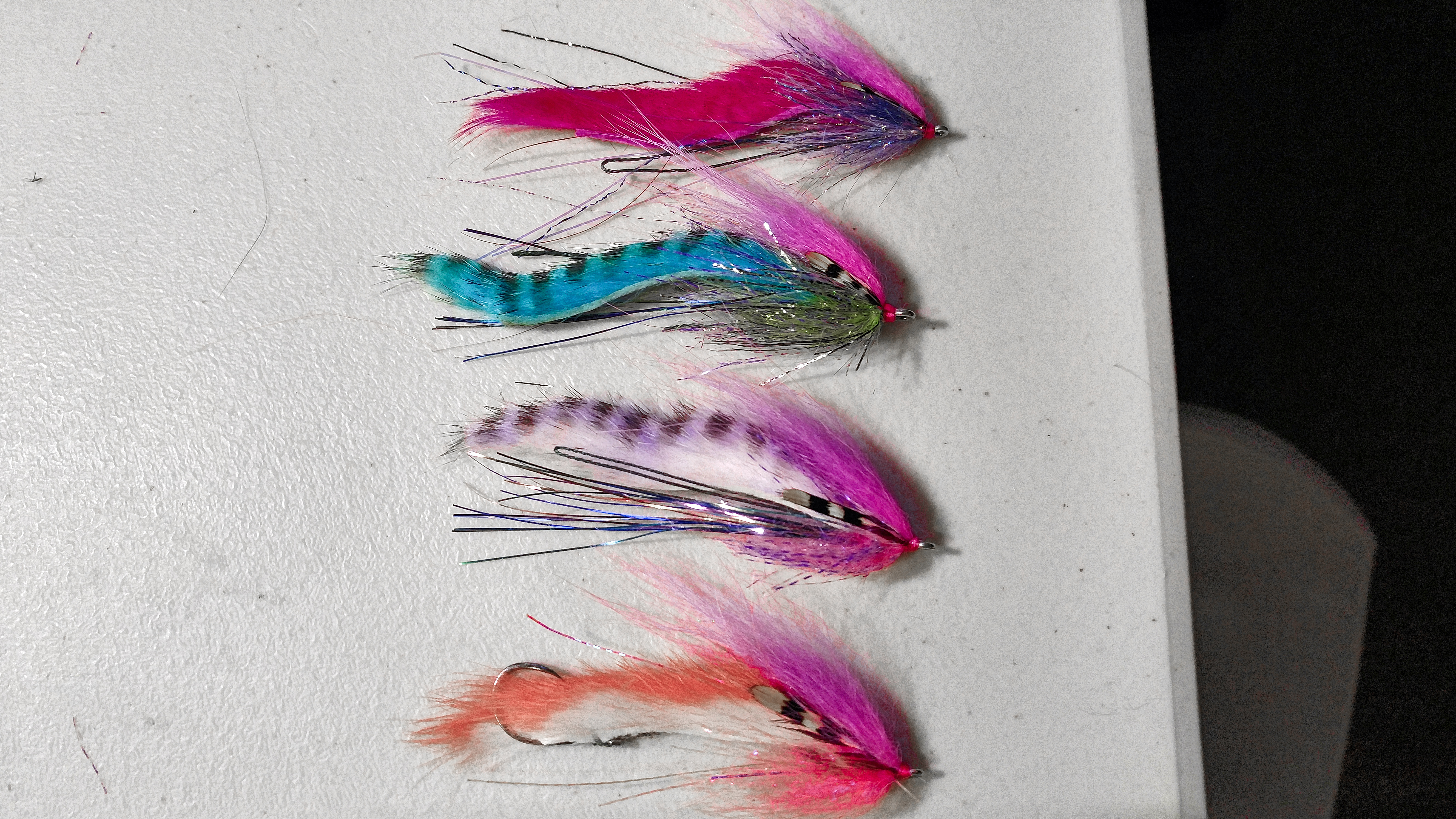What is Spey?
In this page we hope to simplify the whole introduction of Spey.
If your new to Spey and looking to learn the Spey talk/lingo, the difference between Spey/Skagit and Scandi lines then your in the right place.
Scroll below for all the details
Spey Gear – quick links to our online store
Rods / Spey Lines Float/Sink Tips / Classes/Clinics
Waters West and Spey
Spey is what we do!
At Waters West we can speak spey and are die-hard spey junkies and glad that the rest of the world has come to recognize the efficiency and the shear enjoyment spey brings!
We have been on the spey scene since the very beginning of the spey craze starting in the 90’s, and have seen them come and go with time. From “chuck and duck” to “precision weapon” our Spey rods and gear have come a long way since the last 20 years as has our understanding of line weights, reel balance, rod selection and casting mechanics. We outfit die-hard spey junkies fishing all over the world and we can answer just about any spey question you can throw at us.
What is Spey?
What is Spey? Spey is an advanced form of fly casting. Spey is any “water-born” cast performed with either a two handed rod, and these days, even single handed rods. The “water-born” cast is performed with specially designed compact heavy fly lines, generally called “Spey lines”. The “water-born” cast where most of the fly line/cast takes place on-top of the water out in font of the caster so that he/she may execute a “roll cast” then shooting line out across the river. Basically spey is just an over glorified roll cast, yet the motions used to set the “Anchor”, then to initiate “load” in the rod are very unique to Spey.
Why use Spey?
- with spey there is no aerial back cast. This means you can fish in really tight brushy areas and not have to worry about throwing your fly into the trees back behind you.
- incredibly fun,
- very efficient from an angling stand point
- you can work tons of water with longer two handed rods… think large, wide rivers
- you will be engaged and learn something new every-single-cast
Where does Spey come from? originating in Scotland on the river Spey during the mid 1800’s. Once it was a skill taught as a traditional sport only for gentlemen and the privileged. Good news is today it doesn’t matter where you come from or the position of your social status. These days you can be living in a van as a steelhead bum and be on water with a high quality spey outfit around $400 or $500.00. Spey Rod Packages
The cast is more a zen like meditative motion that delivers power with little effort. With advancements in technology, our overall understanding of the physics behind the spey cast, spey can be performed with any fly rod, and almost any line. But a true (efficient) spey cast is done with a certain type of compact heavy fly line designed for use with a two-handed rod. The cast is a “water born cast” which means most of the cast takes place out in front of you. These two handed rods allow an angler to cover water quickly and efficiently with tremendous line control. It’s not only effective but it’s incredibly fun.
Where can you use Spey? Lately we’ve been applying these spey rods and or spey style casts to a world of fish species and locations. We’re on the coast for Cutthroat trout, bass in rivers and lakes, trout fishing (streamers and yes even dry flies!) Tarpon fishing out on the flats, all of which is gaining in popularity as fly fisherman recognize the efficiency and overall enjoyment spey casting brings. These days we have short compact spey lines for single handed rods. check out Commando Heads. So you can fish a shooting head (spey fly line) on your single hand 3wt, 6wt and on up to 10wt. These compact spey lines are fun and effective on any trout river
Do you have an injury? a blown/weak shoulder, elbow, wrist injury that has limited or all together prevented you from enjoying your time on the water? Spey casting requires less energy/strength input with tons of energy output! Spey causes less strain on the joints and muscles which is why you will find a lot of fisherman with physical limitations using Spey. Many of us with limitations like this gravitate towards the Spey cast.
Learning Spey. The very nature of the spey cast takes years to master but only a few hours to learn. These days rods and lines are so efficient that that learning curve has been cut in half. Learning the spey cast has more to do with muscle memory than the knowledge of how to make the cast. (You may have already experienced this) you can YouTube till you brain hurts but actually performing the cast is something entirely different. So the driving point to make is this. If you start off developing muscle memory that is incorrect than the learning curve just became your K2.
Spey Casting Class. Learn from one source how to perform the correct casting motion then go from there. Personally speaking I spent a year learning it on my own hacking away developing bad habits and it only took (exactly) 8 minutes with our Head Guide/instructor Curt Reed to completely flip my world… Having an instructor, who not only knows how to cast, but has a developed systematic method for teaching spey will boost your skills and confidence tenfold. We’ve been doing these classes for over a decade now have a sleeve full of differing approaches to suite a wide range of learning styles. The whole prerogative is for you to have fun learning, get out on your own and have fun doing it.
Spey Rods
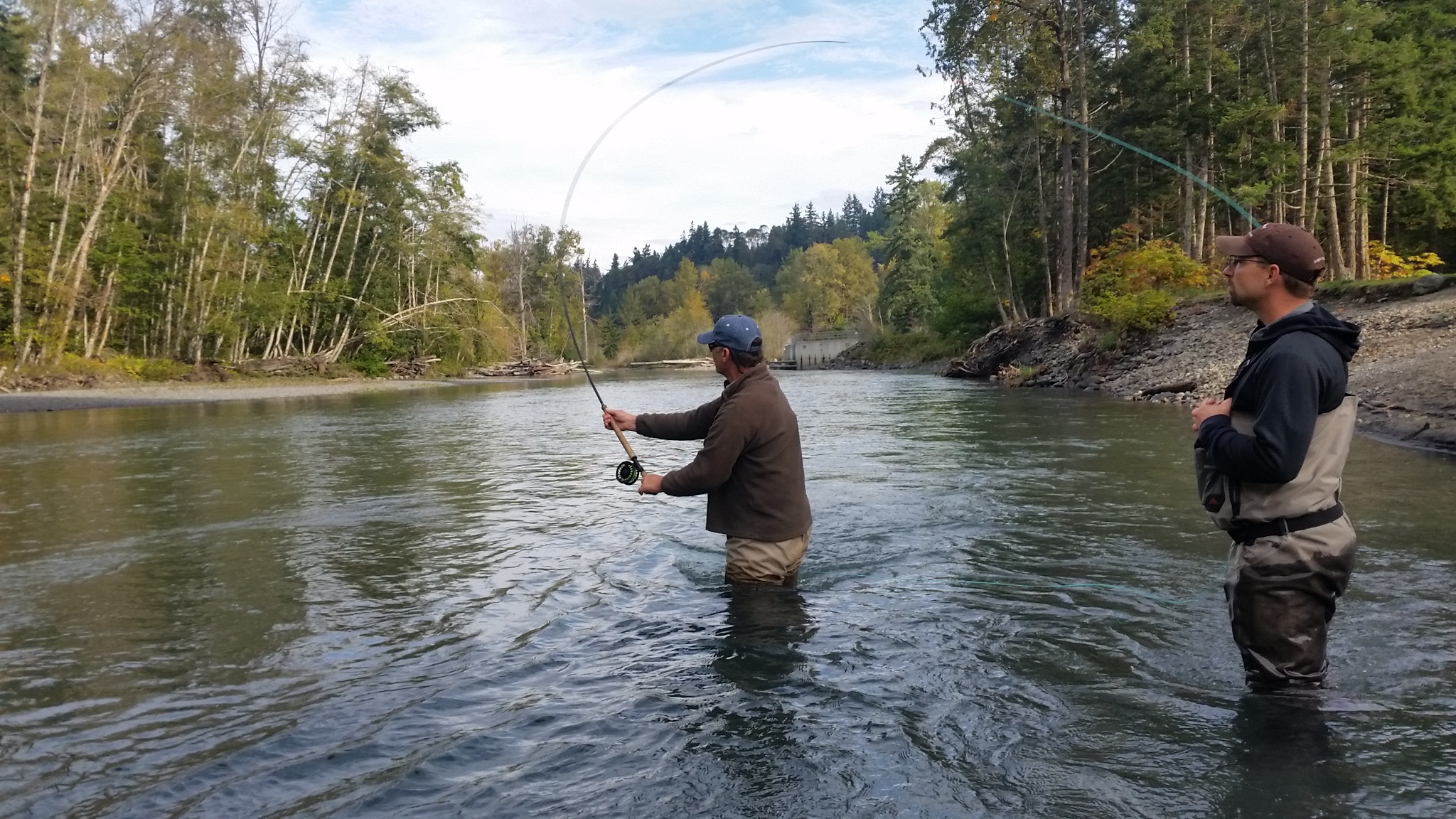
 Spey rods have come a reeaally long way even since the last decade. These days spey rods are more like high power precision sniper rifles. These rods are designed in lengths of 10ft to 15 ft. This long length gives the caster leverage so you can make further casts, handle longer fly lines and the length gives you better line control over the water, like mending and tending to the line during the swing.
Spey rods have come a reeaally long way even since the last decade. These days spey rods are more like high power precision sniper rifles. These rods are designed in lengths of 10ft to 15 ft. This long length gives the caster leverage so you can make further casts, handle longer fly lines and the length gives you better line control over the water, like mending and tending to the line during the swing.
Spey Rod: 12.5 ft – 15ft (some rods have been in excess of 18ft… which for most rivers is not very practical these days)
- We use spey rods 6wt to 12wt @ 11ft to 15ft for all sizes of salmon and steelhead.
Switch Rod: 10ft – 12ft (a switch rod is really just a baby spey rod)
- For trout, 1wt to 6wt spey @ 9ft to 11.6 ft (now called “Switch” rods for anything shorter than 12ft) these rods are the scaled down versions of their big brothers but super fun for the trout angler!
Other Species: bass, panfish and even tarpon.
Common names for Spey lines
“Spey” is a casting style. Spey is performed with all types of water born casts.
Whats the difference of Spey, Skagit, Scandi lines?
Really all of these are “Spey” lines. Which causes some confusion from time to time.
Though, all of these lines are performed using more or less the same Spey casts, the names/terminology will tell you which type of line is used to perform the Spey cast. The name given to the different Spey lines has to do with the taper and length. (see picture above)
- “Spey” line is anything longer than 40ft and up to 120ft in length
- “Scandi” long tapered line typically 28 to 40ft in length
- “Skagit” short fat line 12ft to 27ft.
Skagit Lines: 12ft – 27ft
Side Note: yes, Skagit is still a spey line and performed with the same spey casts as all the other spey lines (though the hand/arm motions are much smaller and requires less work) so you will most always hear these spey lines call “Skagit”.
The thickest and shortest of all the spey lines. The most modern of the Spey lines. Developed on the Skagit River here in our home state of Washington, these lines are thick and short designed to throw bulky weighted flies, the heaviest of sink tips, and yet still the easiest to cast. Also one of the most common lines used today in America and gaining much popularity in places like Japan and Europe.
Scandinavian/”Scandi”: 28ft-40ft
Medium length, Scandi lines typically have a long fine taper. Developed in Scandinavia on rivers with very little back casting space. These lines are best used with smaller flies, tapered mono leaders or poly leaders or sinking leaders. We often select Scandi lines for small and even larger rivers. Moderately easy and pleasing to cast.
Spey/Traditional/Long Belly: 40ft-100ft
Mostly any line over 40ft falls under the classification of a “Spey” line. There’s many different types of Spey lines; Short belly lines, mid belly lines and long belly lines. Traditionally these lines where double tapet, and very difficult to cast. Today high quality materials and design make the casting much more efficient and come in wide range of lengths of 40ft to 120ft. These lines will cast tapered mono leaders, poly leaders, sinking leaders and some of the heavier spey lines will cast sink tips. These Spey lines excel over big water where long casts are the norm but… they are the most difficult to use
Skagit
 The Skagit system consists of these three interchangeable parts (sold separately) to complete the fly line
The Skagit system consists of these three interchangeable parts (sold separately) to complete the fly line
- Running line
- Shooting head
- Tip (float or sink)
Where we use Skagit Heads:
When fishing distances of right-at-your-feet to 60ft casts. We use the Skagit system mostly in the Fall and Winter months fishing for steelhead and large Salmon species. Often times if your fishing cold, fast, high dirty water then you need a larger fly so the fish will see and take it. Now you need a heavy sink tip to pull this large guady fly down deep where the fish are. Next you need a specially designed heavy fly line to carry all the weight of this heavy sink tip and that fat fly (think wet hamster on the end of you fly line). Those two thing are a lot of weight and no other fly line can do it with ease. That’s where the Skagit head comes in.
Advantage:
- Easy to cast
- Quick change out of running line, shooting head, sink tip
- Will cast the heaviest of sink tips (Float-Tips all the way up to T-20 the heaviest & fastest sinking tips)
- Best choice for fishing tight brushy rivers with limited back casting space
Disadvantage:
- Not the best for really large rivers (i.e Clearwater River, ID)
- Not the best for little spey flies (sz 1.5 to sz 10)
- because its thick and heavy Skagit heads are a bit clunkier landing on the surface with a slight splash
- May need to strip in lots of running line after each cast
To further understand you must have running line and you must have a tip attached to the Skagit head in order for it to be one complete fly line.
Scandi
Where we use Scandi:
When fishing distances of 25ft to 70ft casts. We use the Scandi system mostly in the Summer and early Fall fishing for steelhead and some Salmon species. Often times in the warmer months of Summer your using a long mono leader, small spey fly, fishing it just bellow the surface. For this, Scandi’s are great!
Advantage:
- Moderate skill needed to cast Scandi lines
- Better for distance casts/working more water
- Best for bushy/small/tight rivers
- Also great large rivers with casts up to 60ft
- You can pick “shooting head” or “integrated” fly lines
- Will cast the smallest of spey flies with finesse (sz 1.5 to sz 10)
- Best choice for fishing tight brushy rivers with limited back casting space
Disadvantage:
- Not the best in heavy winds
- Will not cast heavily weighted flies
- does not cast standard level sink tips. (instead try sinking leaders which work well with Scandi lines)
Spey/Traditional/Long Belly
Where we use long Spey lines:
When fishing distances of 40ft to 120ft casts. We may use the Spey lines during all four seasons. mostly in the Summer and early Fall fishing for steelhead and some Salmon species. Often times if your summer your using small spey flies over shallow clear water. All you need to do is attach a leader and tie on a fly, fishing it just bellow the surface.
Advantage:
- Better for distance casts/working lots o’ water
- Best for large rivers where you may need to cast 60ft to 100ft
- You can pick “shooting head” or “full/integrated” fly lines
- With “some” Spey lines you may be able to use a light sink tip
- Will cast the smallest of spey flies with finesse (sz 1.5 to sz 10) and some larger heavier variations as well such as some larger Atlantic tube patterns.
Disadvantage:
- Most difficult to cast
- not the best for really tight quarter fishing
Float/Sink Tips
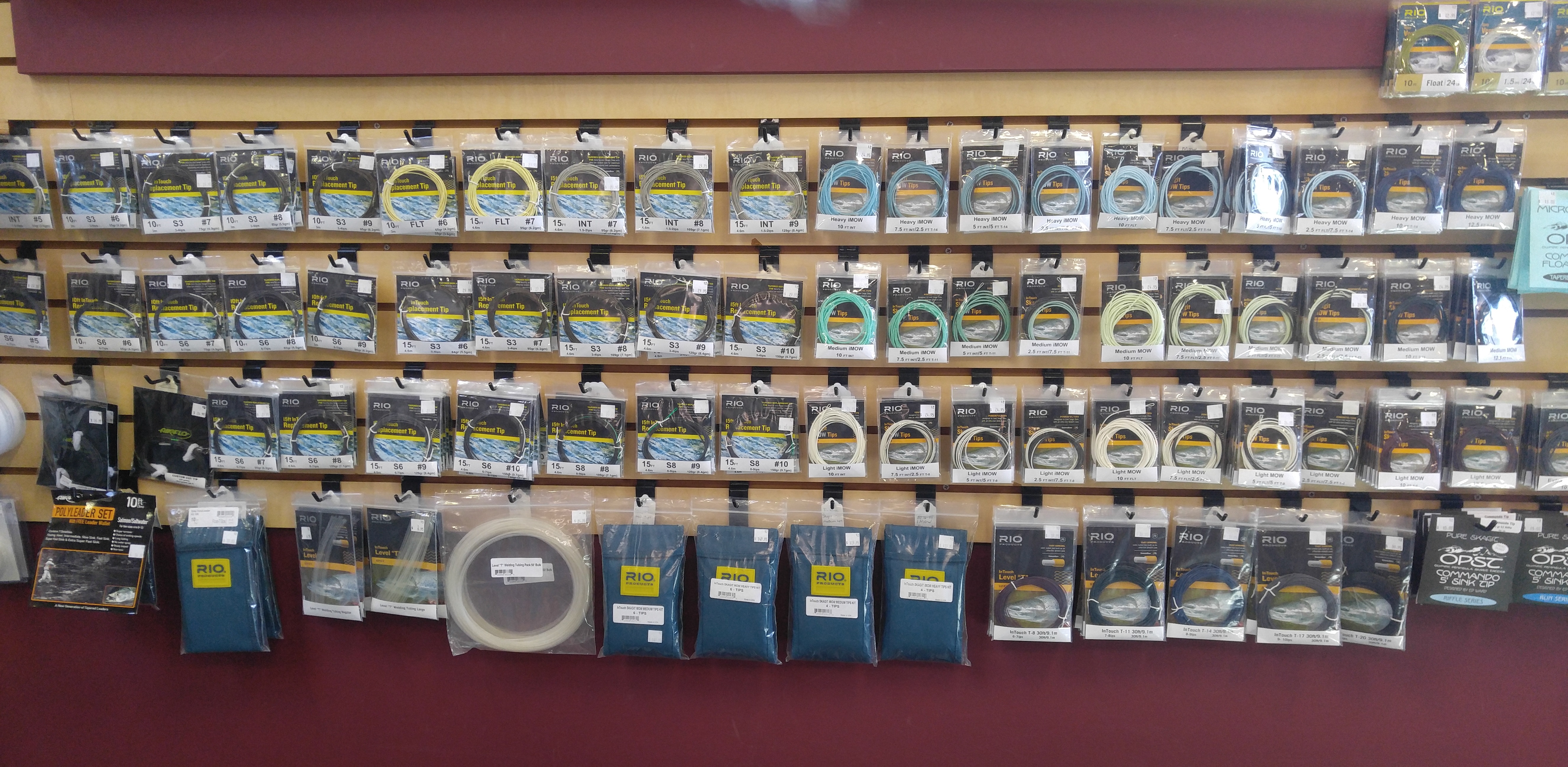
Our wall of confusion. Spey sink and floating tips, fully stocked and ready for most any condition you may face
Used mainly with Skagit lines but still commonly used with some heavier Spey lines
(this article does not cover sinking leaders, poly leaders and other nefarious sinking attachments)
Today there are more sink tip options than most human minds can comprehend. These different lengths, sink rates and grains give you the ability to fine tune your approach and assemble a well “balanced system”. You can fish deep, you can fish shallow, you can fish bouldery pocket water, or you can fish long broad runs. What ever it is I’m sure there is a tip for you.
if you see a wall like this and have no clue where to start… we understand. Just give us a call (360)417-0937 and we can find tips that will best suit your needs.
When do we use sink tips? on all Skagit heads you will add some type of tip. You may find a need for sink tips at any time of the year but mainly during the colder winter months for steelhead or salmon or when you simply need to get your fly down to where the fish are at.
There are three things we look for when choosing a sink tip and all of these features are interchangeable or combined which is what makes sink tip so confusing for most of us.
The Three Main Considerations
-
Sink Rate (measured in *IPS)
-
Length (measured in *Feet)
-
Weight (measured using *Grains)
Sink Rate
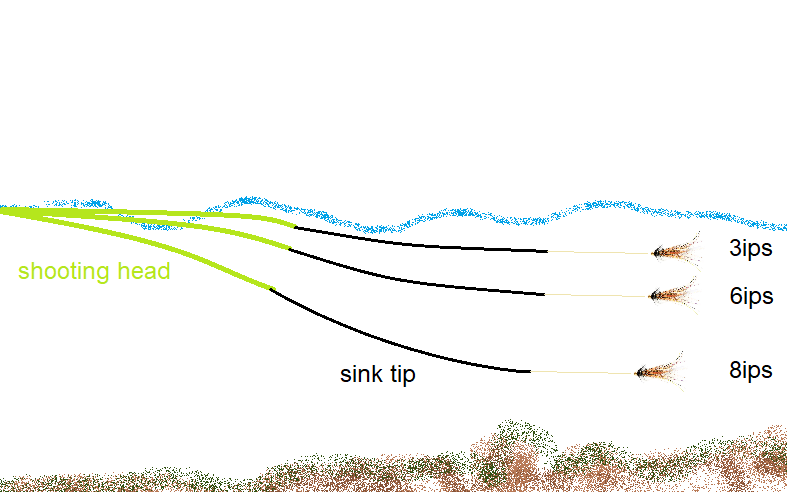
simplified visual example of “sink rate”. Given the speed is the same for all examples, you can see here what sink rate means to you, the more the sink rate, the deeper the line will sink. (in the river sink rate is subject to current speed)
Whats “Sink Rate”? how fast your line sinks. (example: a 8-9ips sink tip dropped into a bucket of water will sink at a rate of 8 to 9 inches per second)
What’s ips? Inches Per Second (or also sometimes just marked S / example: S3 = 3ips)
How can you tell how fast your sink tip sinks? you can usually find out how much the sink tip sinks or what the “ips” is by looking at the package or these days most tips are color coded and or have a line ID telling you in fine print what the sink tip is.
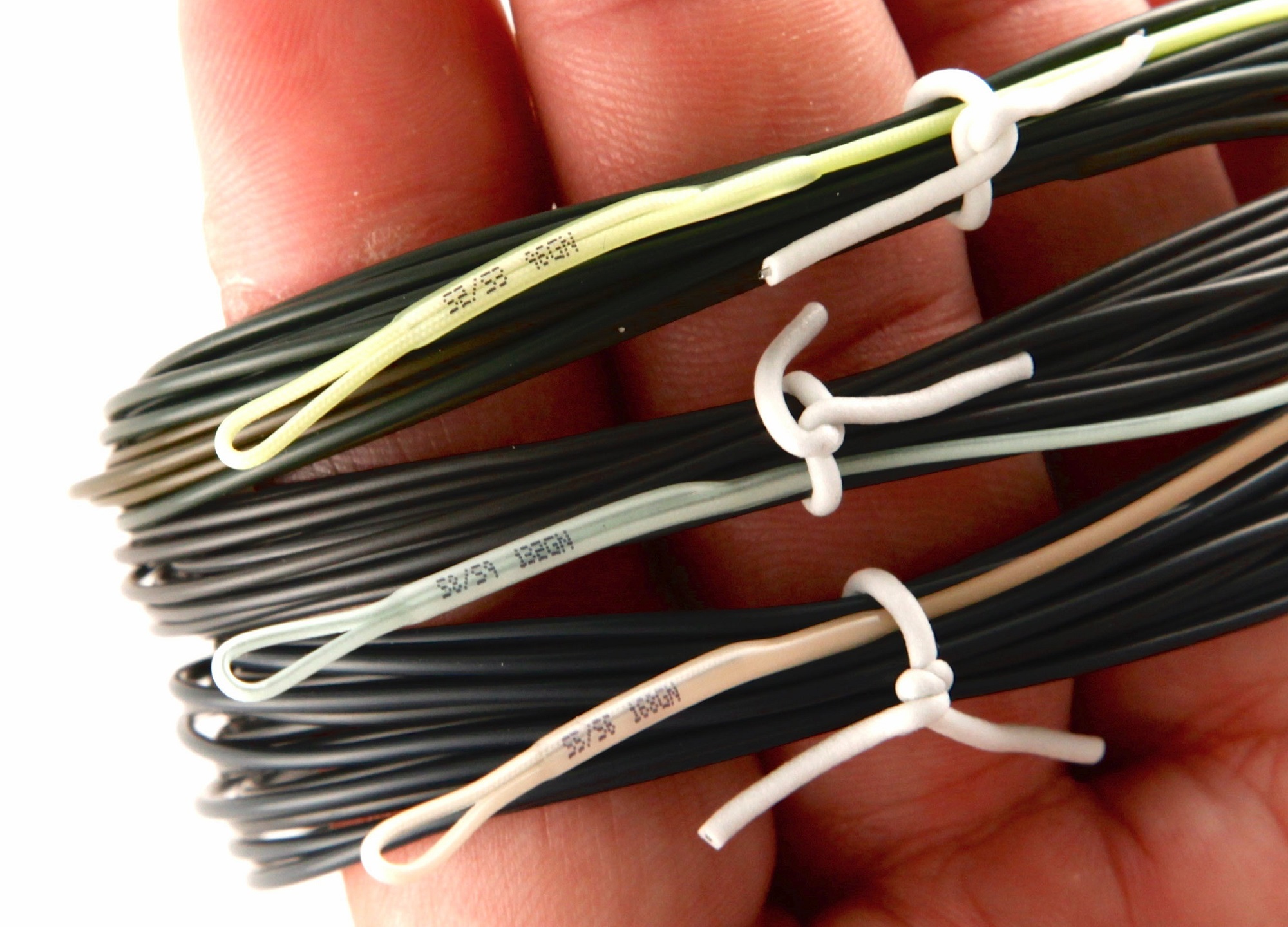
OPST Commando Tips, you can see here the line ID’s marking the *sink rates and how much the tips weighs in *grains. Most sink tip manufacturers do this these days
What makes Sink Tips Sink? Most sink tips these days use a Tungsten powder in the coating making the line more dense than water. By adding more Tungsten in the coating the faster the line will sink. Again – the more Tungsten in the sinking tip/the heavier it weighs/the faster it sinks.
Example: (lightest and heaviest)
- a Rio MOW sink tip:T-8 light(8 grains of tungsten per foot)= sinks 6-7ips
- a Rio MOW sink tip: T-17 Xtra heavy!(17 grains of tungsten per foot) = sinks 9-10ips
Length
Length is important for the size rod you use, or for the size water you plan on fishing. Most Skagit heads use tips 10ft to 12.5 ft in length
common lengths:
- 5ft
- 10ft
- 12.5ft
- 15ft
We like using 10ft tips for smaller water and 12.5 or 15ft tips for big broad runs. A lot of considerations for length has to do if your rod can cast the sink tip. If you have a short Switch rod or might not be able to cast a 15ft tip, so check with our shop or just give it a try.
Weight
Keep it simple when first getting into Spey and all the sink tips one could shake a stick at? Caution with this rabbit hole of information! For when just getting into sink tips we recommend just focusing on the sink rate and the length before trying to pick your own custom weight sink tips. Unless you’ve established a good point of reference we recommend you don’t focus on the weight quit yet. Just ask us if the tip is too heavy or to light to go with your rod. It’s easy to buy a tip that’s too heavy for your rod. Some tips increase in weight the faster it sinks and some manufactures sink tips weigh all the same yet all have different sink rates. IF your already confused, its all right, trust us, spey sinks tips are a rabbit hole of delirium. But, if you must read further..
In the spey world we weigh everything in Grains: When selecting tips we first consider if your rod has the ability to cast it. Everything in the Spey world is measured in grains, our head and our sink tip and even fly weight must be considered as all spey rods have a “Grain Window”. If your shooting head and or tip is too heavy it will “Over-Load” your rod and casting will become difficult or impossible. You could also be too light and not load the rod correctly. Because of the vast amount of variables and combinations it helps if you call us (360)417-0937 and we can demystify your sink tip dilemma.
Why know how much a tip Weighs? Knowing how much your sink tip weighs in *Grains will let you know which tips you can cast and which tips you cant. Some sink tips may be too heavy for some rods/lines to cast.
Ultimately, In order to really understand you just have to cast a sink tip and get a point of reference, cast a bunch of tips and you’ll get it down!
If your unsure if you rod can cast a certain sink tip, again, always feel free to call our shop (360)417-0937
How are sink tips Weighed? by laying the whole sink tip on a scale measuring in *Grains
What are *Grains? a measurement given to a sink tip to determine how heavy a tips is. Most sink tips and shooting heads and even standard WF single handed fly lines are being labeled and weighed in *Grains, so you can select the right weight line for you rod.
Typically the faster the sink rate, the more a sink sink tips weighs. Again this may have to do with how much tungsten is in the sink tip.Example:
- a Rio MOW sink tip:T-8 light( has 8 grains of tungsten per foot)= 90 *Grains in weight
- a Rio MOW sink tip: T-17 super heavy!(17 grains of tungsten per foot)Weighs = 180 *Grains in weight
(although some sink tips, such as Rio Replacement tips or OPST commando Tips, can give you the option of choosing different sink rates yet pick on e consistent *Grain weight. That may be explained another time, for now lets not go there.)
Today most popular tips are:
Rio MOW Tips: Level T sink tip material.
- Available in 10ft or 12ft lengths.
- Sink rates: Float / Intermediate (1.5ips) / T-8 (6-7ips) / T-11 (7-8ips) / T-14 (8-9ips) / T-17 (9-10ips)
- may not select *Grain weight options
Rio Replacement Tips: Originally guys were cutting the first 15ft tip off a spey line and “replacing” the floating tip with a new sink tip. Hence the name “Replacement Tip”.
- Available in lengths 10ft or 15ft
- Sink rates: Float / Intermediate (1.5ips) / Type 3 (3ips)/ Type 6 (6ips)/ Type 8 (8ips)
- may select *Grain weight options: 95gr / 109gr / 129gr / 150gr
OPST Commando Tips: The 12ft tips are “dual density” (one half sinks more than the other half. Hence the name “Dual Density”) these dual density lines sink more tip first and some agree this is a better presentation. The 5ft tips are only level sink.
- 12ft sink tips (“Dual Density” and you can pick different *Grain weights)
- 5ft sink tips (“Level Sink” and can not pick different *Grain weights)
- 5ft / 7.5ft / 10ft float tips (may not pick *Grain weights)
- Sink rates: Float / sink 2/3 / sink 3/4 / sink 5/6 / sink 8/9
- may select *Grain weight options (only 12ft tips): 96gr / 132gr / 168gr
- Available in 10ft lengths
- Sink Rates: T7 (7ips) / T10 (8ips) / T14 (9ips) / T18 (10ips)
- may not select *Grain weight options
Flies
Hair Wing: any fly tied with the wing primarily consisting of some type of hair
Feather Wing: any fly tied with the wing tied in an upright position. Most traditional Atlantic Salmon patterns consist of this style of fly
Tube Fly: any fly tied on a tube. by running your leader through the tube and then tying a hook onto the leader you can interchange hooks quickly and easily and you get to eliminate any long shanks which give leverage pulling the hook out of the fishes mouth.
Intruder: a fly that is tied on either a tube or shank, built on a contemplative platform of one to three stations or aka “shoulders” in this cast the fly in the picture is a two station intruder, one in the rear and one in the front.
Leech: a pattern using rabbit strip aka”Zonker” or marabou. Really the material doesn’t really change the classification so much as long as it is thin/stringy then it is often called a “leech”.

